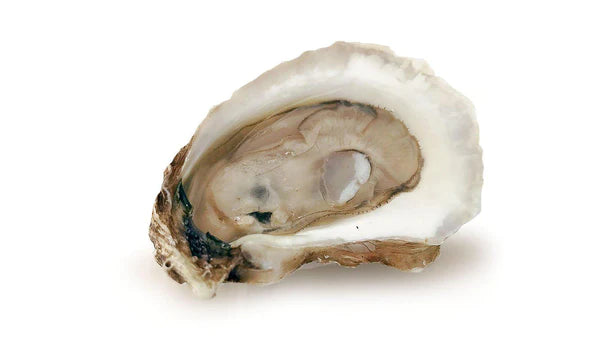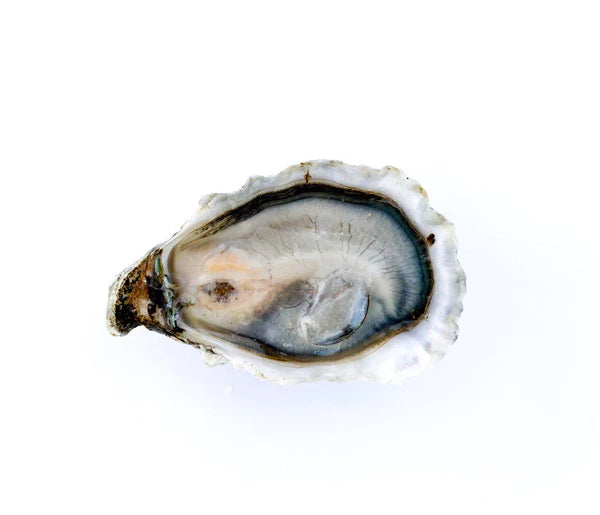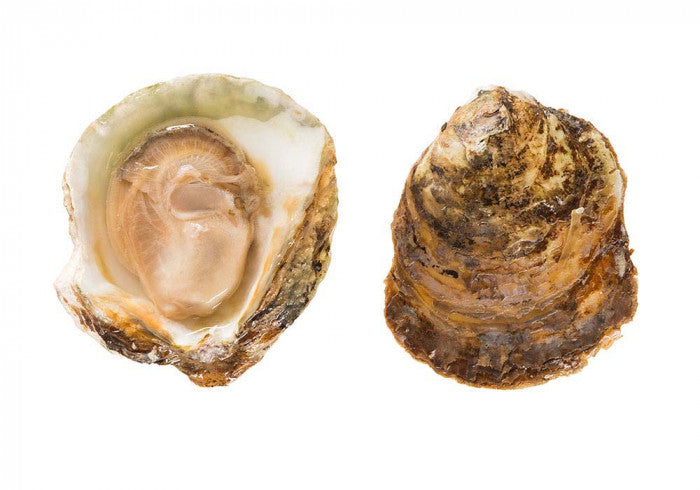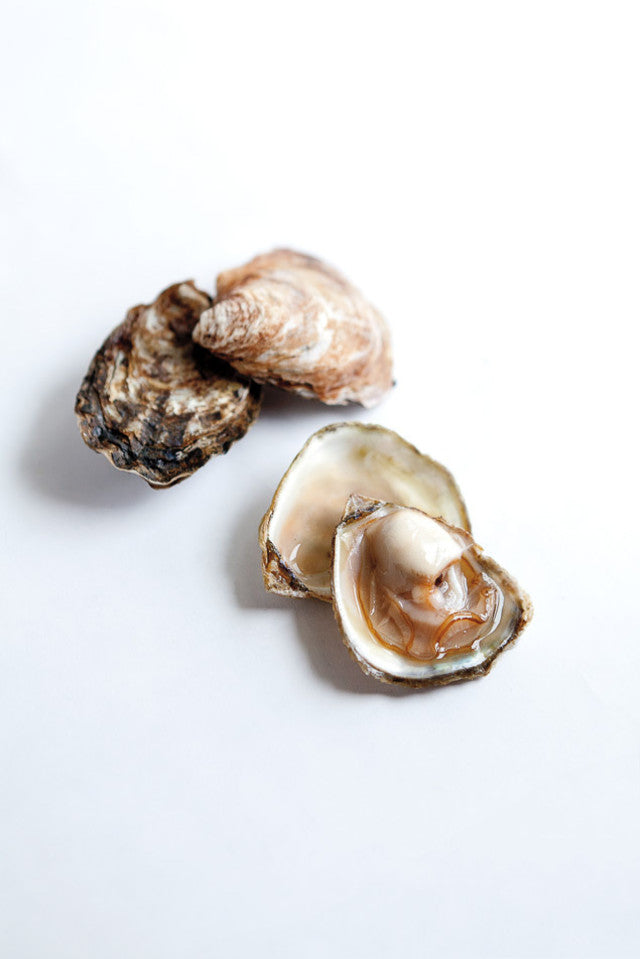SPECIES

The Eastern Oyster
Crassostrea virginica
The Eastern Oyster (Crassostrea virginica) is America’s most popular oyster on ice. Also known as the Atlantic oyster, they line America’s East Coast as far as Newfoundland to the Gulf of Mexico’s shorelines (it’s even stretched to Washington State, but that’s a pretty rare occurrence). Virginicas are what you’ll find deep fried in Louisiana, steamed in South Carolina, and served raw on the half in New England.
Eating an Eastern Oyster is a gulp of brine, a hearty chew, and crisp finish. These oysters are like a blank canvas—they obediently represent their flavors of home.
Most East Coasters are die-hards for their hometown oysters. The Yankee might dabble in other species at New York or Boston raw bars, but they’ll almost always fall back to their first love.
Photo Cred: Real Oyster Cult
The most popular oyster grown on America’s West Coast today is the Pacific Oyster (M. gigas). They’re not a native—in fact, they hail from Japan! The Pacific Oyster was introduced to American waters in 1913 after America’s West Coast native, the Olympia Oyster, experienced a decimating decline from over-harvest. If you’re a world traveler, expect to find the Pacific Oyster at raw bars in most parts of the world today. They’re the “true grit” survivors of the oyster species. Pacific Oyster shells can have leggy, ruffled edges or super smooth, rounded shells. Artists obsess over their nuanced markings, shapes, and ribbon-like structures.
Their flavors are arguably more intricate and layered in comparison to the Eastern oyster, so husbandry and proper farming techniques are important. Their bodies are more creamy, soft, and dense. Pacific Oysters are remarkably diverse and therefore brilliant to explore.
Photo Cred: Hama Hama Oysters

Kumamoto
Magallana sikamea
If you see Kumamoto (M. sikamea) on your raw bar list, you’re in for a sweet treat. Kumamotos, also fondly referred to as a “Kumies” or “Kumos,” are another non-native that landed on America’s West Coast in the 1940s from Japan’s southern island of Kyushu.
Kumos took decades to catch up at raw bars due to their market unfamiliarity and longer grow-out processes. However, their unique, melon-packed fruity array is now a fan favorite, and extremely approachable for newcomers.
Kumos are adorable. They’re like the “Hello Kitty” version of Pacific Oysters in that they are petite, deep cupped, and often chubby with meat to the brim. It’s as if the oyster buries itself downward, letting out a button or two on its waist as it burrows.
Photo Cred: Marx Foods

European Flat
Ostrea edulis
Heralding from its native European waters, the European Flat (O. edulis, also referred to as Belons which are still grown today in the Belon River, France) artificially came to America in the 1950s by Dutch Scientists as a way for Maine and other parts of New England to get an edge on the oyster market. It’s ability to spawn in cold waters gave it appeal, but it wasn’t as easy as Mainers initially thought. New England gave up on the Flat, but decades later they found wild beds surviving off their coasts.
True to their name, these oysters are flatter in shape and pick up the green hues from the floor of the water column. Their taste, however, is powerful. Full of metallics, you may find yourself feeling as if you sucked on a penny wrapped in seagrass.
European Flats account for less than 1% of North America’s oyster industry but they have a rare flavor profile enjoyed by the oyster connoisseur.
Photo Cred: Kagerer.com

Olympia
Ostrea lurida
The Olympia Oyster (O. lurida) also known as “Olys,” is an American native that once glittered along the coastlines of our Pacific Northwest until the Gold Rush and industrialization impacted its survival. Luckily, a few beds were still intact and decades later they were rediscovered in Washington’s Puget Sound, which is now undergoing Olympia restoration thanks to determined non-profits like Puget Sound Restoration Fund. It’s not easy, however. They’re fiddly creatures who prefer calm tides, coves, and inlets.
These morsels are often likened to European Flats in that they’re very metallic to taste and the shell concentricity is similar. However, the Olympia not quite as “heavy metal” as the Flat. Its flavor has smoother and smokier chromatics.
You might struggle finding Olympias outside of the Pacific Northwest due to their poor natural preservation for shipping, but I can assure you, they’re worth the great vacation to taste.
Photo Cred: Seattle Met

